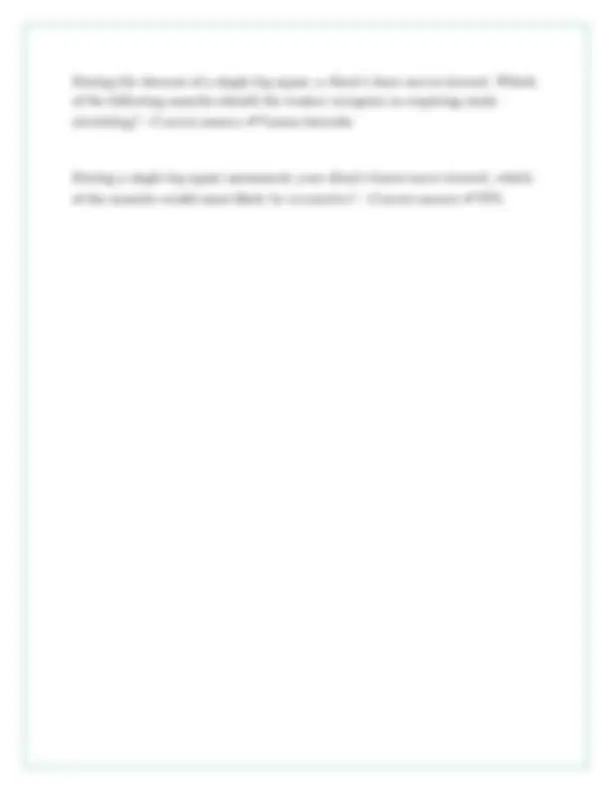



Study with the several resources on Docsity

Earn points by helping other students or get them with a premium plan


Prepare for your exams
Study with the several resources on Docsity

Earn points to download
Earn points by helping other students or get them with a premium plan
Community
Ask the community for help and clear up your study doubts
Discover the best universities in your country according to Docsity users
Free resources
Download our free guides on studying techniques, anxiety management strategies, and thesis advice from Docsity tutors
A series of multiple-choice questions and verified answers related to fitness assessments, specifically focusing on the nasm (national academy of sports medicine) exam. The questions cover various assessment techniques, including overhead squat assessments, postural assessments, and single-leg squat assessments. Key areas addressed include identifying underactive and overactive muscles, understanding pronation distortion syndrome, and applying the heart rate reserve (hrr) method for establishing training intensity. This resource is valuable for students and professionals preparing for fitness certifications or seeking to deepen their understanding of fitness assessment principles and practices. It provides a concise review of essential concepts and practical applications in the field of exercise science, aiding in the development of comprehensive assessment skills and knowledge.
Typology: Exams
1 / 3

This page cannot be seen from the preview
Don't miss anything!


If || a || client's || feet || turn || out || during || the || overhead || squat || assessment, || what || muscle || would || be || considered || underactive? || - || Correct || answer || ✔Medial || gastrocnemius What || is || the || term || for || the || client's || pulse || found || on || their || wrist? || - || Correct || answer || ✔Radial || Pulse Which || method, || also || known || as || the || Karvonen || method, || is || used || for || establishing || training || intensity || based || on || the || difference || between || a || client's || predicted || maximal || heart || rate || and || his || or || her || resting || heart || rate? || - || Correct || answer || ✔Heart || rate || reserve || (HRR) || method During || a || static || postural || assessment, || a || personal || trainer || observes || that || a || client || has || protracted || shoulders || and || a || forward || head. || Which || of || the || following || muscles || is || most || likely || to || be || shortened? || - || Correct || answer || ✔Sternocleidomastoid || and || pectoralis || major Which || of || the || following || muscles || is || probably || underactive || if || a || client's || support || or || standing || leg || falls || inward || during || a || single-leg || squat || assessment? || - || Correct || answer || ✔Gluteus || medius
During || a || single-leg || squat || assessment, || a || personal || trainer || notices || a || client's || knee || drifting || inward. || Which || of || the || following || muscles || is || probably || underactive? || - || Correct || answer || ✔Gluteus || medius Which || of || the || following || is || characterized || by || flat || feet || and || adducted || and || internally || rotated || knees? || - || Correct || answer || ✔Pronation || distortion || syndrome A || client's || shoulder || elevates || when || performing || a || pushing || assessment, || what || is || a || probable || underactive || muscle? || - || Correct || answer || ✔Lower || trapezius A || client's || low || back || arches || during || a || pulling || assessment. || Which || of || the || following || muscles || should || be || stretched? || - || Correct || answer || ✔Hip || flexor || complex In || a || client || with || lower || crossed || syndrome, || which || of || the || following || muscles || is || lengthened? || - || Correct || answer || ✔Gluteus || maximus During || the || overhead || squat || assessment, || which || areas || should || the || fitness || professional || focus || on || from || the || anterior || view? || - || Correct || answer || ✔Feet || and || Knees When || assessing || a || client's || overhead || squat, || which || of || the || following || is || an || indication || of || over-activity || in || the || lateral || gastrocnemius? || - || Correct || answer || ✔feet || turn || out